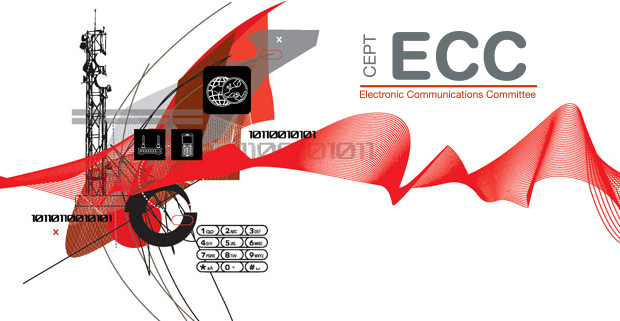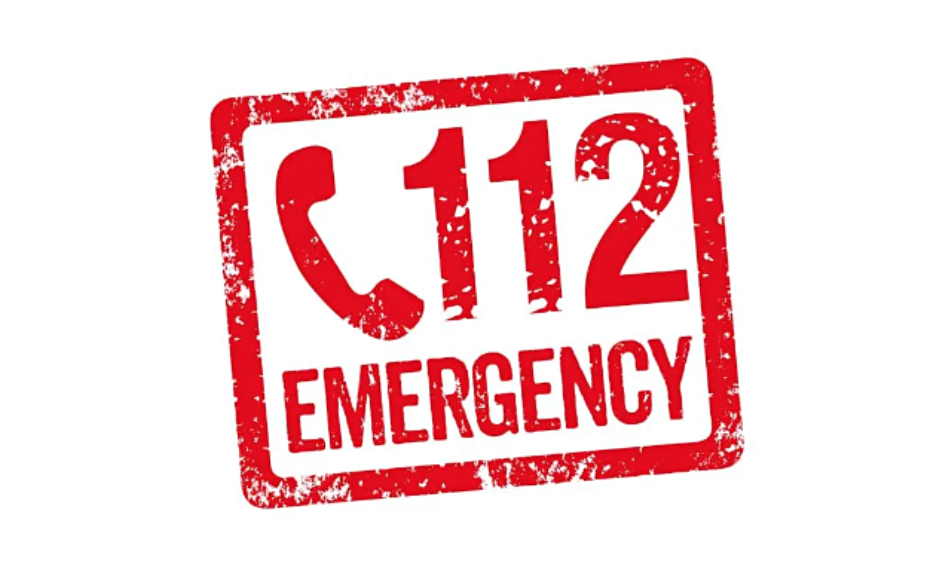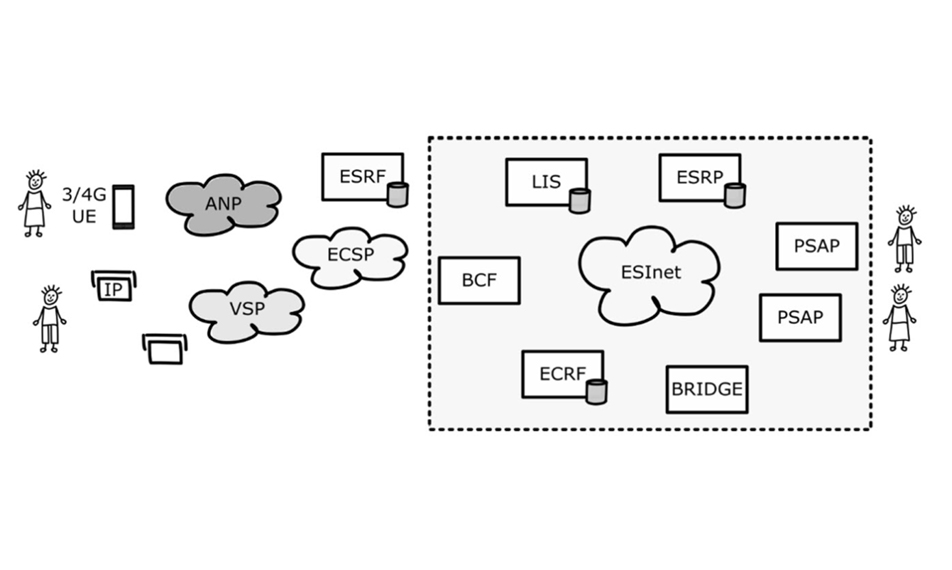Next generation emergency communications
Vassil Krastev, ECO Numbering and Networks Expert, explores the need for a new IP-based emergency communications network and how emergency services and citizens will benefit from the technological migration from circuit-switched to packet-switched technologies
Emergency services provide immediate and rapid assistance in situations where there is, in particular, a direct risk to life or limb, to individual or public health or safety, to private or public property, or to the environment. The common number in Europe to reach emergency services is the single European emergency number 112, which functions alongside other existing national emergency numbers, although some countries have opted for 112 as their only national emergency number.
Figure 1 [source: www.digit.in]
The traditional method to reach emergency services, including police, fire brigade and ambulance, is the number-based, telephone-based 112 call from fixed and mobile phones. The 112 call connects to a so-called Public Safety Answering Point (PSAP) where an emergency communication is first received with the goal to request and receive emergency relief from emergency services.
A specially-trained PSAP operator will answer the emergency call and either respond directly or transfer the 112 call to the most appropriate emergency service depending on the national organisation of emergency services.
Technological migration
In recent years technological developments have opened up new possibilities for end-users to access emergency services not only by traditional telephony (circuit-switched) but also using new technologies such as Voice over Internet Protocol (VoIP). This is due to the phasing out of 2G and 3G legacy networks and the transition from circuit-switched to packet-switched network technology.
Moving to all-IP communications will have many benefits: it will allow emergency services to leverage the potential of using applications and it will enable end-users to use various means of voice, text and video communications. Importantly, it will also enable PSAPs to provide the emergency services with relevant contextual information conveyed by the end-user or derived and transmitted automatically from the end-user’s device or network. For example, from the handset they will be able to derive caller location information based on advanced mobile location; while from the network, they will get the address of the calling party or the cell/sector ID, depending on whether the user is on a fixed or mobile network.
The Electronic Communications Committee’s (ECC) Working Group Numbering and Networks (WG NaN) addressed the issue of migration to IP-based networks in ECC Report 265. The report provides a technical overview of the migration to IP-based networks, which should enable regulators and other stakeholders to better understand the challenges of this important technological step. It also addresses location information for emergency calls which could be affected by the transfer of traditional services, such as voice, to IP.
Although voice communication to 112 is the main means of access to emergency services, the technological migration from circuit-switched to packet-switched technologies enables alternative enhanced methods of access to emergency services. These are particularly relevant for end-users with disabilities and may include text and video-based services which cannot be supported by the legacy 2G/3G networks. The existing, legacy PSAP and emergency services infrastructure is not designed in a way that enables interaction with enhanced services, or that current and future communications and operational requirements will be met. Simply put, the PSAP and emergency services infrastructure has not kept up with technology, thus, is not able to provide the level of service that citizens expect.
In the context of the technological migration to all-IP networks, national PSAP systems and emergency services need to evolve and be able to receive, answer and process emergency communications through packet-switched technology.
In terms of emergency caller location information, ECC Report 225 provides a comprehensive overview of the various technological possibilities to obtain emergency caller location information and to provide that information to the PSAP. Caller location information in VoIP networks has also been addressed in ECC Report 193, while ECC Report 301 addresses technical aspects of providing caller location information from private/corporate networks using IP-based protocols and work-around solutions that may be implemented where legacy network technology is used.
European legislation
The entry into force of the European Electronic Communications Code (EECC) acknowledges these technological developments by introducing a significant change in vocabulary. Previous references to “emergency calls” have now been replaced by the term “emergency communications” defined as “means of communication, that includes not only voice communications services, but also SMS, messaging, video or other types of communications, for example real time text, total conversation and relay services” (Recital 285, EECC).
Moreover, Article 109 ‘Emergency communications and the single European emergency number’ of the EECC provides the conceptual framework for emergency communications covering several distinct aspects including:
- Free-of -charge access to emergency services through emergency communications;
- The establishment and provision of caller location information;
- Equivalent access to emergency services for end-users with disabilities;
- Routing of emergency communications to the most appropriate PSAP;
- Continuous access to emergency services while roaming in the European Union.
In order to ensure effective access to emergency services through emergency communications to the emergency number 112, Article 109 (8) places an obligation on the European Commission to adopt delegated acts, after consulting the Body of European Regulators for Electronic Communications (BEREC), supplementing paragraphs 2 (routing to the most appropriate PSAP), 5 (equivalent access for end-users with disabilities) and 6 (establishment and provision of caller location information) of Article 109. In doing so, it takes the measures necessary to ensure the compatibility, interoperability, quality, reliability and continuity of emergency communications in the EU. The first such delegated act shall be adopted by 21 December 2022.
The need for a new IP-based emergency communications network
In response to technological development, a new technical architecture for a future IP-based emergency communications network was first introduced in the United States by the National Emergency Number Association called Next Generation 911 (NG911).
In 2013, the European Emergency Number Association published a document, entitled Next Generation 112 - Long Term Definition, which describes the core concept of a Next Generation 112 architecture - the Emergency Services IP Network (ESInet).
ESInet is an emergency services network of networks that utilises IP technology. ESInets are private, managed, and routed IP networks. An ESInet can serve a set of PSAPs, a region, a state, or a set of states. ESInets may be interconnected and have to be built upon common functions and interfaces, which makes them interoperable.
Based on the core concept of the Next Generation 112 architecture, the European Telecommunications Standards Institute(ETSI) defined the core elements and corresponding technical interfaces for network independent access to emergency services (Figure 2) in its technical specification ETSI TS 103 479 V1.1.1 (2019-12).
Figure 2 Core elements for network independent access to emergency services [source: ETSI TS 103 479]
All PSAPs will have to be able to handle calls originated by different types of networks, such as over- the-top (OTT) VoIP providers, 3GPP IP Multimedia Subsystem (IMS) networks, enterprise networks, as well as legacy circuit switched networks. Not all PSAPs will be compatible or upgraded with next generation capabilities at the same time, which makes gateways, such as the Legacy PSAP Gateway, crucial elements in the architecture. This architecture enables citizens to contact emergency services in different ways, using the same types of technology as those they use to communicate every day. It also enables PSAPs to receive contextual information about emergencies of all magnitudes and improves interoperability between PSAPs and emergency services.
Emergency calls originating in an access network provider infrastructure are forwarded via a voice service provider to an emergency call service provider where the appropriate PSAP or, in general terms, the point-of-interconnect to a PSAP service provider (PSP) infrastructure is determined. In general, emergency calls are routed by the emergency service routing function to the emergency service routing proxy via a border control function. Depending on national PSAP models the proxy may then forward directly to the appropriate PSAP, using an interface or PSP internal facilities to determine the correct PSAP. The above architecture (Figure 2) introduces functional elements that comprise an IP-only PSP environment. Such elements provide security measures such as border control function, location information service and emergency call routing. They also map PSAP boundaries to the emergency call routing function (ECRF), bridging (BRIDGE) and call processing equipment (PSAP).
Next steps
All stakeholders in the emergency communications handling chain in Europe – including terminal equipment providers, electronic communications network and service providers, solutions providers/integrators, PSAPs and the emergency services – will need to invest in new infrastructure, processes and procedures to meet the various regulatory requirements of inter-alia the EECC, its supplementing delegated regulations and the European Accessibility Act.

ECC’s WG NaN recently agreed on a new ECC deliverable to be added to the work programme of its project team on emergency communications - ECC Report on Next Generation 112. The ECC Report will evaluate the technological potentials, regulatory requirements and the possible applications or use cases of Next Generation 112. It will look at the potential challenges in terms of funding, supply chain for 112 emergency communications and the phasing out of 2G/3G. Other challenges will also be examined, including the impact of the introduction of Next Generation 112 and whether there is legacy support for certain devices. Accessibility and equivalence in access to emergency services will also be considered, as will prioritisation of emergency calls in a packet-switched environment. Furthermore, the ECC Report will look at how caller location information can be enhanced, and how emergency communications are routed to the most appropriate PSAP based on the caller’s location.





